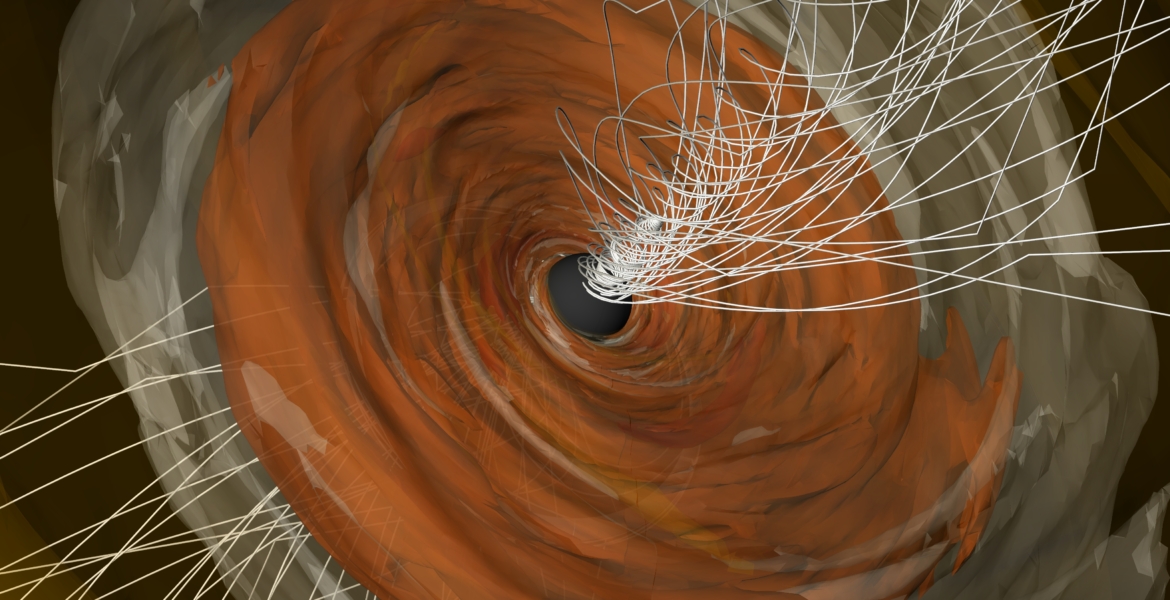The U.S. National Science Foundation National Radio Astronomy Observatory (NSF NRAO), in partnership with several leading Mexican universities and research institutes, has announced a series of landmark agreements and meetings aimed at advancing Mexico’s role in the Next Generation Very Large Array (ngVLA) project.
Recent News
Astronomers Discover a Superheated Star Factory in the Early Universe
Astronomers have uncovered a previously unknown, extreme kind of star factory by taking the temperature of a distant galaxy using the ALMA telescope. The galaxy is glowing intensely in superheated cosmic dust while forming stars 180 times faster than our own Milky Way.
Astronomers Share Largest Molecular Survey To-date: GOTHAM Legacy Data Goes Public
Astronomers in the “GBT Observations of TMC-1: Hunting Aromatic Molecules” research survey, known as GOTHAM, have released a spectral line survey with largest amount of telescope time ever conducted, charting more than 100 molecular species only found in deep space.
A Supermassive Black Hole’s Strong Magnetic Fields are Revealed in a New Light

The Event Horizon Telescope (EHT) collaboration has published new results that describe for the first time how light from the edge of the supermassive black hole M87* spirals as it escapes the black hole’s intense gravity, a signature known as circular polarization. The way light’s electric field prefers to rotate clockwise or counterclockwise as it travels carries information about the magnetic field and types of high-energy particles around the black hole. The new paper, published today in Astrophysical Journal Letters, supports earlier findings from the EHT that the magnetic field near the M87* black hole is strong enough to occasionally stop the black hole from swallowing up nearby matter.
The Atacama Large Millimeter/submillimeter Array (ALMA) is the world’s most powerful millimeter/ submillimeter telescope, and a key instrument for the EHT. The spiraling light at the heart of this research is actually made up of low frequency radio waves—light that can’t be seen by the human eye or optical telescopes, but can be observed by the many radio telescopes, including ALMA, working together across the EHT.
“Circular polarization is the final signal we looked for in the EHT’s first observations of the M87 black hole, and it was by far the hardest to analyze,” says Andrew Chael, an associate research scholar at the Gravity Initiative at Princeton University, who coordinated the project. “These new results give us confidence that our picture of a strong magnetic field permeating the hot gas surrounding the black hole is the right one. The unprecedented EHT observations are allowing us to answer long-standing questions about how black holes consume matter and launch jets outside their host galaxies.”
In 2019, the EHT released its first image of a ring of hot plasma close to the event horizon of M87*. In 2021, EHT scientists released an image showing the directions of the oscillating electric fields across the image. Known as linear polarization, this result was the first sign that the magnetic fields close to the black hole were ordered and strong. The new measurements of the circular polarization – which indicate how light’s electric fields spiral around the linear direction from the 2021 analysis – provide yet more conclusive evidence for these strong magnetic fields.
ALMA provided both data and calibration for these results, and served as the array reference antenna for the EHT. Without the much greater sensitivity of ALMA as the reference antenna, circular polarization could not have been detected.
About ALMA & NRAO
The Atacama Large Millimeter/submillimeter Array (ALMA), an international astronomy facility, is a partnership of the European Organisation for Astronomical Research in the Southern Hemisphere (ESO), the U.S. National Science Foundation (NSF) and the National Institutes of Natural Sciences (NINS) of Japan in cooperation with the Republic of Chile. ALMA is funded by ESO on behalf of its Member States, by NSF in cooperation with the National Research Council of Canada (NRC) and the Ministry of Science and Technology (MOST) and by NINS in cooperation with the Academia Sinica (AS) in Taiwan and the Korea Astronomy and Space Science Institute (KASI).
ALMA construction and operations are led by ESO on behalf of its Member States; by the National Radio Astronomy Observatory (NRAO), managed by Associated Universities, Inc. (AUI), on behalf of North America; and by the National Astronomical Observatory of Japan (NAOJ) on behalf of East Asia. The Joint ALMA Observatory (JAO) provides the unified leadership and management of the construction, commissioning and operation of ALMA.
The National Radio Astronomy Observatory (NRAO) is a facility of the National Science Foundation, operated under cooperative agreement by Associated Universities, Inc.
This news article was originally published on the NRAO website on November 8, 2023.
Recent News
NSF National Radio Astronomy Observatory and Mexican Institutions Sign Historic Agreements to Advance ngVLA Collaboration
The U.S. National Science Foundation National Radio Astronomy Observatory (NSF NRAO), in partnership with several leading Mexican universities and research institutes, has announced a series of landmark agreements and meetings aimed at advancing Mexico’s role in the Next Generation Very Large Array (ngVLA) project.
Astronomers Discover a Superheated Star Factory in the Early Universe
Astronomers have uncovered a previously unknown, extreme kind of star factory by taking the temperature of a distant galaxy using the ALMA telescope. The galaxy is glowing intensely in superheated cosmic dust while forming stars 180 times faster than our own Milky Way.
Astronomers Share Largest Molecular Survey To-date: GOTHAM Legacy Data Goes Public
Astronomers in the “GBT Observations of TMC-1: Hunting Aromatic Molecules” research survey, known as GOTHAM, have released a spectral line survey with largest amount of telescope time ever conducted, charting more than 100 molecular species only found in deep space.
